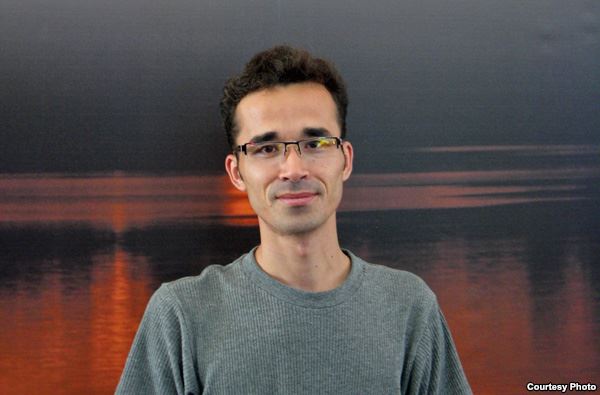Guest Post by Alessandra Buonanno: Nobel Laureates Call for Release of Iranian Student Omid Kokabee
 Usually I start guest posts by remarking on what a pleasure it is to host an article on the topic being discussed. Unfortunately this is a sadder occasion: protesting the unfair detention of Omid Kokabee, a physics graduate student at the University of Texas, who is being imprisoned by the government of Iran. Alessandra Buonanno, who wrote the post, is a distinguished gravitational theorist at the Max Planck Institute for Gravitational Physics and the University of Maryland, as well as a member of the Committee on International Freedom of Scientists of the American Physical Society. This case should be important to everyone, but it’s especially important for physicists to work to protect the rights of students who travel from abroad to study our subject.
Usually I start guest posts by remarking on what a pleasure it is to host an article on the topic being discussed. Unfortunately this is a sadder occasion: protesting the unfair detention of Omid Kokabee, a physics graduate student at the University of Texas, who is being imprisoned by the government of Iran. Alessandra Buonanno, who wrote the post, is a distinguished gravitational theorist at the Max Planck Institute for Gravitational Physics and the University of Maryland, as well as a member of the Committee on International Freedom of Scientists of the American Physical Society. This case should be important to everyone, but it’s especially important for physicists to work to protect the rights of students who travel from abroad to study our subject.
Omid Kokabee was arrested at the airport of Teheran in January 2011, just before taking a flight back to the University of Texas at Austin, after spending the winter break with his family. He was accused of communicating with a hostile government and after a trial, in which he was denied contact with a lawyer, he was sentenced to 10 years in Teheran’s Evin prison.
According to a letter written by Omid Kokabee, he was asked to work on classified research, and his arrest and detention was a consequence of his refusal. Since his detention, Kokabee has continued to assert his innocence, claiming that several human rights violations affected his interrogation and trial.
Since 2011, we, the Committee on International Freedom of Scientists (CIFS) of the American Physical Society, have protested the imprisonment of Omid Kokabee. Although this case has received continuous support from several scientific and international human rights organizations, the government of Iran has refused to release Kokabee.
Omid Kokabee has received two prestigious awards:
- The American Physical Society awarded him Andrei Sakharov Prize “For his courage in refusing to use his physics knowledge to work on projects that he deemed harmful to humanity, in the face of extreme physical and psychological pressure.”
- The American Association for the Advancement of Science awarded Kokabee the Scientific Freedom and Responsibility Prize.
Amnesty International (AI) considers Kokabee a prisoner of conscience and has requested his immediate release.
Recently, the Committee of Concerned Scientists (CCS), AI and CIFS, have prepared a letter addressed to the Iranian Supreme Leader Ali Khamenei asking that Omid Kokabee be released immediately. The letter was signed by 31 Nobel-prize laureates. (An additional 13 Nobel Laureates have signed this letter since the Nature blog post. See also this update from APS.)
Unfortunately, earlier last month, Kokabee’s health conditions have deteriorated and he has been denied proper medical care. In response, the President of APS, Malcolm Beasley, has written a letter to the Iranian President Rouhani calling for a medical furlough for Omid Kokabee so that he can receive proper medical treatment. AI has also made further steps and has requested urgent medical care for Kokabee.
Very recently, the Iran’s supreme court has nullified the original conviction of Omid Kokabee and has agreed to reconsider the case. Although this is positive news, it is not clear when the new trial will start. Considering Kokabee’s health conditions, it is very important that he is granted a medical furlough as soon as possible.
More public engagement and awareness is needed to solve this unacceptable case of violation of human rights and freedom of scientific research. You can help by tweeting/blogging about it and responding to this Urgent Action that AI has issued. Please note that the date on the Urgent Action is there to create an avalanche effect; it is not a deadline nor it is the end of action.
Alessandra Buonanno for the American Physical Society’s Committee on International Freedom of Scientists (CIFS).

